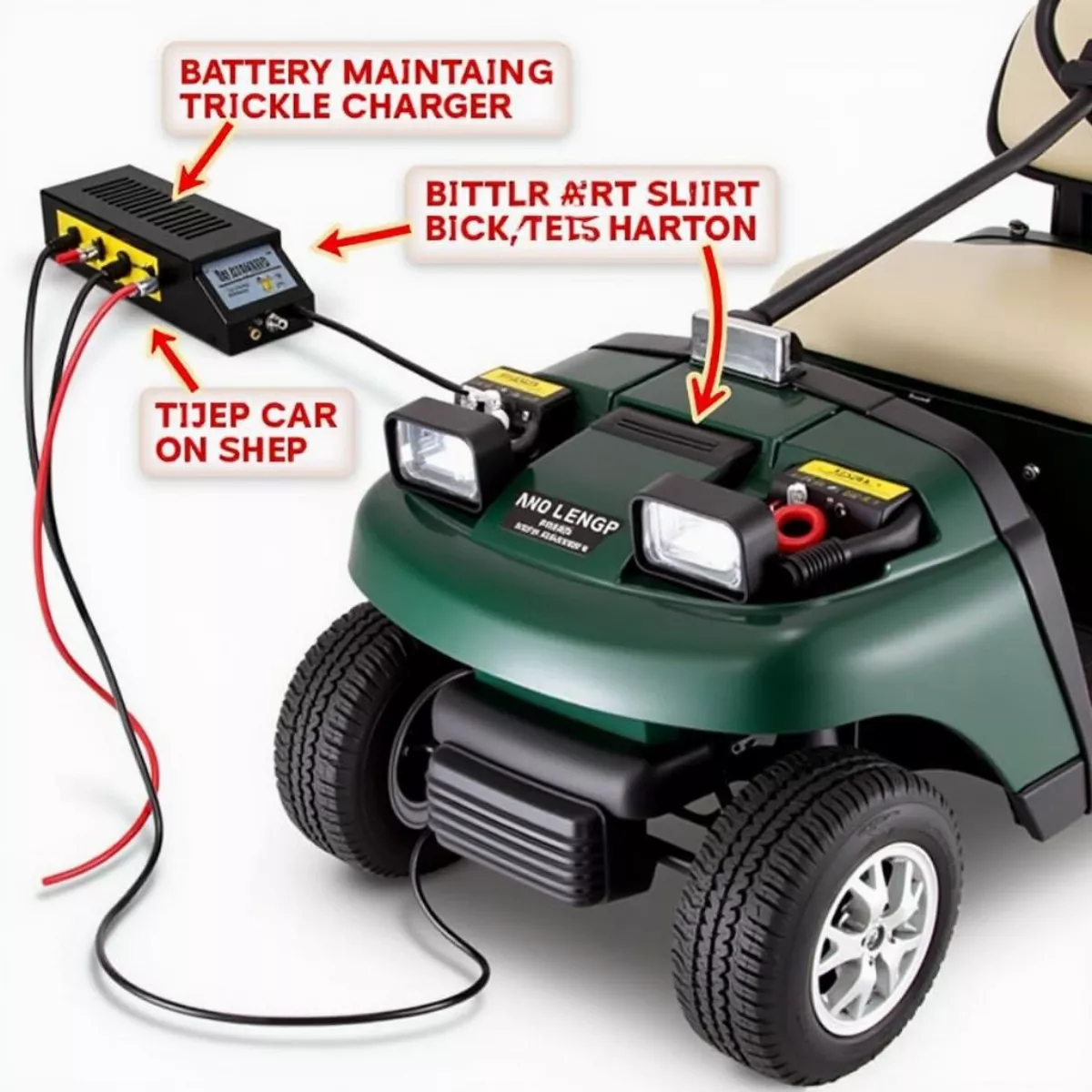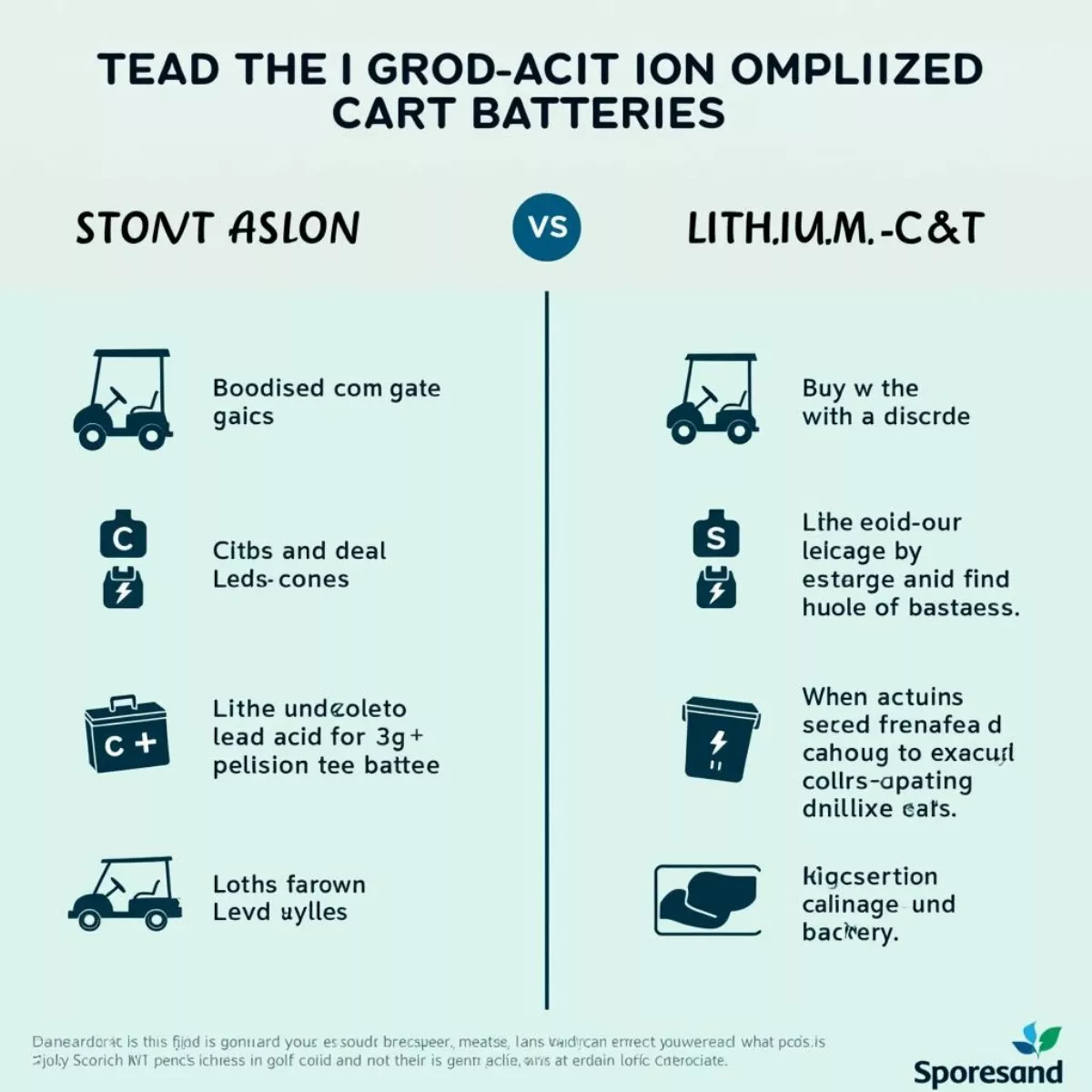When it comes to golf carts, proper maintenance is key to ensuring they perform well year after year. One critical aspect that many owners overlook is how to handle their cart batteries when the cart is not in use for an extended period. This could happen during the off-season, for instance, when you store your golf cart in a garage or shed. Disconnecting the batteries might seem like a small task, but doing it correctly can save you time, money, and hassle in the long run.
In this article, we’ll cover the in-depth steps to disconnect your golf cart batteries for extended storage, along with tips to ensure your batteries remain in excellent condition.
Understanding Your Golf Cart Batteries
Before diving into the steps of battery disconnection, let’s take a moment to understand the types of batteries commonly used in golf carts:
- Lead-Acid Batteries: The most common type, ideal for most golf carts. They tend to be cheaper but require more maintenance.
- Lithium-Ion Batteries: More expensive but offer better performance, longer lifespan, quicker charging, and reduced weight.
“Regular maintenance and preventive measures can extend the life of your golf cart batteries significantly.”
Factors to Consider Before Disconnecting Your Batteries
- Battery Type: Knowing whether you have lead-acid or lithium-ion batteries is crucial since maintenance procedures may differ.
- Storage Environment: A dry, cool place is ideal.
- State of Charge: Ensure your batteries are sufficiently charged (typically above 50%) before storing.
Steps for Disconnecting Golf Cart Batteries
Disconnecting your golf cart batteries involves several steps. Here’s a handy guide:
Step-by-Step Instructions
- Gather Your Tools: Ensure you have necessary tools like a wrench or socket set, a battery cleaner, and gloves for protection.
- Turn Off Power: Always ensure your golf cart is turned off. This avoids any risk of short-circuiting.
- Locate the Battery Compartment: This usually involves lifting the seat or rear panel of your golf cart.
 Golf Cart Battery Compartment
Golf Cart Battery Compartment
- Remove the Negative Cable:
- Use a wrench to loosen the bolt securing the negative cable (usually marked with a “-” symbol).
- Carefully lift off the cable from the terminal and place it to the side, ensuring it doesn’t touch any metal.
- Remove the Positive Cable:
- Repeat the same process with the positive cable (marked with a “+” symbol).
- Make sure it is also away from the battery terminals once disconnected.
- Inspect the Batteries: Check for corrosion or damage on the terminals. You can clean them using a battery cleaner if needed.
- Seal Properly: Cover the battery terminals with protective caps if available, to prevent any accidental connections.
Additional Tips
- If you have multiple batteries (as with 36V or 48V carts), disconnect them in the same order for consistency.
- Consider connecting a battery maintainer or trickle charger while your cart is in storage to keep batteries in optimal condition.
 Golf Cart Battery Maintainer Connected
Golf Cart Battery Maintainer Connected
Maintaining Your Batteries During Storage
Proper maintenance can go a long way in ensuring your batteries remain in good health:
- Check Water Levels: For lead-acid batteries, ensure the water levels are adequate. Add distilled water if necessary.
- Store in a Cool Place: An ideal temperature ranges from 32°F to 80°F. Extreme heat or cold can affect battery performance.
Do’s and Don’ts
| Do’s | Don’ts |
|---|---|
| Keep batteries charged | Don’t let batteries discharge completely |
| Inspect regularly | Don’t store in damp or hot places |
| Use protective covers | Don’t forget to disconnect if not in use |
Key Takeaways
- Disconnect your golf cart batteries for extended storage to extend their lifespan.
- Always disconnect the negative cable first, followed by the positive cable.
- Inspect and clean battery terminals for optimal maintenance.
- Store your batteries in a cool, dry place and consider using a battery maintainer.
Frequently Asked Questions (FAQ)
- How often should I disconnect my golf cart batteries?
- It’s best to disconnect your batteries anytime you plan on storing your cart for three weeks or longer.
- Can I leave my golf cart plugged in during storage?
- It’s advisable to unplug it unless using a battery maintainer to avoid overcharging.
- How do I know if my battery needs water?
- Remove the cap and check if the water level is below the lead plates. If so, add distilled water.
- What happens if I accidentally reconnect the cables incorrectly?
- Incorrect connections can cause short circuits and irreversible damage to your batteries. Always ensure you connect positive to positive and negative to negative.
- Are lithium-ion batteries better than lead-acid ones?
- Lithium-ion batteries are generally more efficient, longer-lasting, and lighter, whereas lead-acid batteries are more economical upfront but require more maintenance.
 Lead-Acid vs. Lithium-Ion Golf Cart Batteries
Lead-Acid vs. Lithium-Ion Golf Cart Batteries
- How long can I leave my battery disconnected?
- You can leave your batteries disconnected for several months as long as they are stored properly.
- Can I charge my battery while it’s disconnected?
- Yes, charging is advisable before storage, but ensure to disconnect afterward for safe storage.
- What tools do I need for battery disconnection?
- A wrench or socket set, battery cleaner, and gloves for safety.
- Is it necessary to clean the terminals?
- Yes, cleaning prevents corrosion that can lead to poor performance.
- Can I store my golf cart outdoors?
- It’s not recommended as outdoor conditions can lead to quicker battery degradation. Always opt for an indoor, climate-controlled environment.
By following these guidelines, you ensure a smooth storage process for your golf cart and its batteries, keeping them in great condition for next season’s rounds. Happy golfing!

